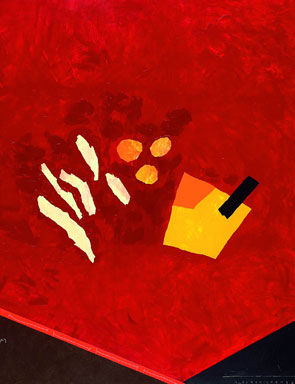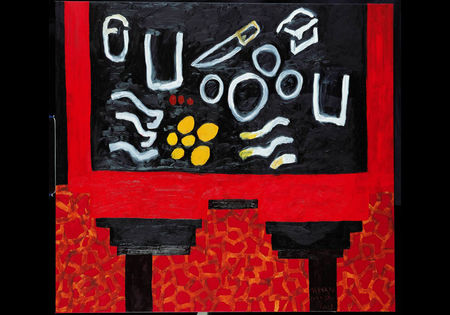IVAM Shows Alberto Corazon Retrospective at the Vietnam Museum of Fine Arts
Alberto Corazón reflects about the relationship between drawing and colour
HANOI.- The exhibition dedicated to Alberto Corazón runs his artistic production since the late sixties to the present through 29 works including paintings, sculptures and conceptual works, selected by the artist from the collection of the IVAM. Alberto Corazón exhibited at the IVAM in 2008 and donated to the museum 47 works.
In spite of the fact that he is considered one of the pioneers of Spanish conceptual art, this cycle of his oeuvre is not well enough known, so this exhibition provides us with a new opportunity to appreciate his experimental contributions to that movement in all their complexity.
Since the outset, Alberto Corazón has combined his artistic production with his professional activity first as a graphic and later as an industrial designer, and is unquestionably one of the most innovating and relevant personalities in this field in our country. The transfers of theoretical ideas and formal recourses between design and the creative activity have been a constant feature of his production, characterised by self-reflection and the integration of interdisciplinary knowledge. The catalogue of the exhibition reproduces all the works displayed in the exhibition and contains texts by Consuelo Císcar, Pilar Parcerisas and Fernando Gómez Aguilera.
The dematerialised practices that Alberto Corazón developed in the early seventies are linked to the profusion of images produced by the then emerging communication society, based on the new opportunities afforded by mechanical reproduction and mass consumerism. Corazón uses the iconographic repertoires of the mass media –accentuating wefts and lines, emphasising the contrast between negative and positive, integrating texts and photographs– while he conceptualises the visual contents, using the theoretical basis provided by the study of semiology and communication and information theory.
Corazón did not only make his contribution to the Spanish culture that struggled to open up lines of resistance and democratic sensitisation during the Francoist regime from the field of art, but also from his editorial initiatives to promote production and knowledge connected with the new practices. In this sense, his editorial projects Ciencia Nueva and Alberto Corazón Editor-Comunicación represent two collective contributions of great importance promoted by the Madrid artist and designer in an attempt to help construct an open, democratic, modern society. In his graphic works, quite unique at the time, he applied linguistic formulas taken from his conceptual investigations, while the editorial line of his publications served to propagate progressive humanistic, social and political contents previously unknown in Spain.
In the eighties there came about a parenthesis in the creative production of the artist, who closed the crisis of conceptual art by devoting himself to his profession as a designer. In 1992, Corazón returned to the world of the visual arts with the exhibition Estrategias de agrimensor (A Surveyor's Strategies), in which he displayed sculptures and paintings based on a grammar constructed on ritual and symbolic objectualism. This was followed by an emblematic style of painting, with expressionist roots, based on primitive, sketchy lines.
Alberto Corazón reflects about the relationship between drawing and colour, representation and archetype, eidetic construction and retinal formulas. In his recent works, he continues with his ideas about perception and iconography and, at the same time, within his cultured painting, he addresses compositional problems closely linked to the iconic identity of the genre and its understanding. His latest still lifes, broadly represented in this exhibition, embody a sort of painting sustained by chromatic effusiveness, objectuality and freedom in the arrangement of figures. This most recent work, Mediterranean and hedonistic, alludes to the creation of a strictly painterly space, proper of painting-painting, suggesting features of innocence and happiness.
The exhibition provides us with a new opportunity to appreciate his experimental contributions to that movement in all their complexity

/https%3A%2F%2Fprofilepics.canalblog.com%2Fprofilepics%2F1%2F0%2F100183.jpg)




/http%3A%2F%2Fstorage.canalblog.com%2F48%2F64%2F119589%2F66409900_p.jpg)
/http%3A%2F%2Fstorage.canalblog.com%2F95%2F70%2F119589%2F55259723_p.jpg)
/http%3A%2F%2Fstorage.canalblog.com%2F44%2F75%2F577050%2F54987925_o.jpg)
/http%3A%2F%2Fstorage.canalblog.com%2F34%2F66%2F119589%2F42215465_p.jpg)